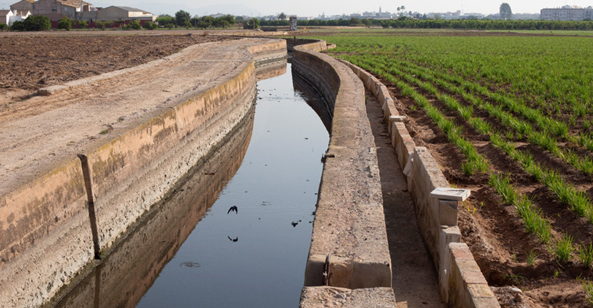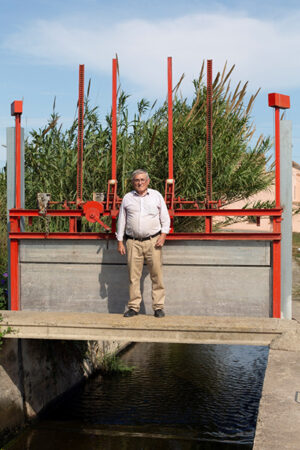November 14, 2019 — In December 2019, representatives of countries around the world will gather for COP 25, the 25th annual Conference of Parties to the U.N. Framework Convention on Climate Change, and negotiate how to implement the Paris Agreement on climate change. However, U.S. President Donald Trump has begun the process of withdrawing from the accord. Will U.S. disengagement be the agreement’s unraveling? Or is there a way to protect a shared resource like our atmosphere and climate even when some choose not to play along?
As an ardent follower of political scientist Elinor Ostrom, who in 2009 was awarded the Nobel Memorial Prize in Economic Sciences, I would like to suggest that we do indeed have hope — that Ostrom’s ideas could serve as a guiding light for avoiding a climate catastrophe even though not everyone is on board.
Shared Resource Surprise
Conventional wisdom related to environmental protection holds that we are trapped in what 20th-century ecologist Garrett Hardin famously called “the tragedy of the commons.” Commons, or common-pool resources, are resources that can be used by anyone but can easily be depleted. Hardin posited that all commons are eventually destroyed. After all, if people can take as much as they want and there is a limited supply, then the resource will soon disappear. Hardin wrote that there are two, and only two, ways to prevent the “tragedy”: privatize the resource or impose government regulations. People, he thought, are just plain unable to control themselves in a commons.
The “tragedy of the commons” was not based on evidence, however, and Ostrom was skeptical. So she went looking for proof — and what she found shocked everyone.
Ostrom and her colleagues carefully analyzed thousands of examples of common-pool resources from around the world. They found that, although some communities depleted their resources and destroyed the commons, others were very successful in sustaining shared resources.
“One of the problems with the commons,” Ostrom said in a 2009 interview, “is that if I trust everyone else is going to be a good guy and I’m cooperative, and they’re not, I’m a sucker. And people are worried about being a sucker.” But her research showed that regular people — farmers, fishers, water managers — have figured out ways to work cooperatively and manage their commons. They reward those who collaborate and punish those who cheat. Some of these solutions have endured for hundreds of years.

Farmers have cooperatively managed irrigation canals like this one in Valencia for more than 1,000 years. © Jason Reblando
Among the commons that informed Ostrom’s work were the irrigation communities of Valencia, Spain. Nearly 1,000 years ago, the area’s farmers banded together to dig irrigation canals and create a set of rules for accessing irrigation water. The farmers elected representatives to a governing body. They established a special water court, the Tribunal de les Aigües, to handle disputes. To this day, the Tribunal meets every Thursday in Valencia’s central square to resolve conflicts over irrigation water and administer justice.

Valencian farmer Ernesto Marí Zazo lowers a water gate to water his fields. © Jason Reblando
Valencia’s canals were not built by the decree of a great king. They were built by farmers who organized themselves. Ostrom found a similar story among irrigation communities in the Philippines, lobster harvesters in Maine, dairy farmers in Switzerland and hundreds of other communities. These communities organized themselves at scales, from local to regional, to match the scale of the resource.
In other words, Hardin was wrong. Ruin is not inevitable, and we aren’t limited to two options for managing commons. People can work together to manage their resources sustainably without restrictions being imposed on them from outside or privatizing the common pool resource.
Design vs. Doom
Collaborations take time to develop, and they are not always successful. There are no secret recipes for resolving the commons dilemma – “no panaceas,” as Ostrom liked to say. However, Ostrom identified a set of eight broad design principles that help collaborative management succeed. These design principles include having clear boundaries, enabling participation in rule-making, holding users accountable and resolving conflicts.
With these principles in hand, Ostrom turned her attention to perhaps the greatest commons of them all: the global climate system. In a 2009 interview, she said, “If … we simply wait until the big guys make a decision, we are in deep trouble.” Her research led her to conclude that, when it comes to tackling climate change, organizing at the local and regional scales is just as important as the global scale. Although climate change is a global problem, there are local and regional benefits to climate action. For example, investments in energy efficiency cut utility bills while reducing greenhouse gases. Public transportation reduces traffic congestion and local air pollution while lowering emissions. A diversified approach to climate action might be better than waiting for a single, top-down solution.
Ostrom died in 2012, but the 2015 Paris Agreement’s structure aligns with her eight design principles. Under that agreement, each country pledges to reduce its greenhouse gas emissions, and each pledge is reviewed by peer countries. Countries that have weak pledges or that don’t follow through on their pledges are pressured by their peers to do more. But they aren’t told how to do more. For example, instead of one global carbon tax or a single worldwide cap-and-trade market, the Paris Agreement encourages nations, regions and cities to experiment and find policies that work in their locations. There is no single remedy, no panacea.
Whether the Paris Agreement will work remains to be seen. It’s still unclear if countries are able and willing to effectively monitor each other and impose penalties on those who are not meeting their targets. And what about the U.S. withdrawal?
Rather than despair about the U.S. exiting the Paris Agreement, we need to act collaboratively. Ostrom’s eight design principles point a way forward. For example, 20 cities across North America have adopted the 2030 Challenge in which property owners and others collaborate and pledge to cut their building energy, transportation greenhouse gas and water footprints in half by 2030. Building owners are saving money by investing in energy and water efficiency. Pennsylvania is collaborating with nine northeastern U.S. states in their cap-and-trade carbon market. These states invest the carbon market revenues into energy efficiency projects that save residents money. California linked its carbon market to Québec’s. We need to hold each other accountable. But even as the U.S. abandons its Paris pledge at the national level, some states, cities and businesses are pursuing aggressive climate action because they reap the benefits.
History has shown that when it comes to sustaining a shared resource, a diversified, collaborative approach can do the job.
No one wants to be a sucker. But no one wants a shared resource to be destroyed, either. Ostrom’s work showed that communities large and small can collaborate to sustain their shared resources. Collaboration enabled Valencia’s irrigation communities to withstand 1,000 years of droughts, floods and bountiful harvests. And collaboration, though difficult and messy, will enable businesses, cities and nations to resolve the climate crisis. The Paris Agreement, with or without the U.S.’s top-level participation, is our best chance for collaborative climate action.
The views expressed here are those of the authors and not necessarily of Ensia. We present them to further discussion around important topics. We encourage you to respond with a comment below following our commenting guidelines, which can be found on this page. In addition, you might consider submitting a Voices piece of your own. See Ensia’s Contact page for submission guidelines.
Related Posts
Ensia shares solutions-focused stories free of charge through our online magazine and partner media. That means audiences around the world have ready access to stories that can — and do — help them shape a better future. If you value our work, please show your support today.
Yes, I'll support Ensia!





